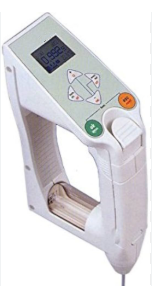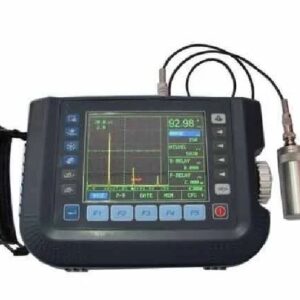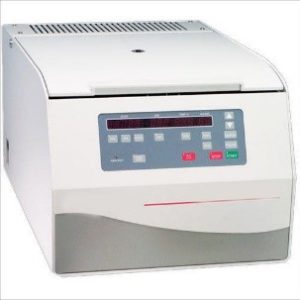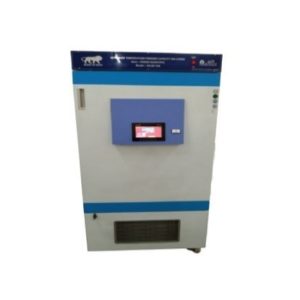DIGITAL ROCKWELL HARDNESS TESTERS
MAKE DINESH SCIENTIFIC
DESCRIPTION
A precision tool used to determine the hardness of materials is a digital Rockwell hardness tester. To ascertain the hardness of metals, alloys, and other materials, the Rockwell hardness test is frequently used in production, quality assurance, and research. A digital Rockwell hardness tester the following important features:
DIGITAL DISPLAY:
- Digital Rockwell hardness testers have electronic displays instead of analog indications, which allows them to provide accurate and readable hardness results.
MICROPROCESSOR CONTROL:
- Microprocessor-based control systems are frequently incorporated into these devices, enabling precise and consistent test results. The testing procedure automated more effectively using digital control.
AUTOMATIC LOAD APPLICATION:
- Automatic test force loading and unloading is a common feature of digital Rockwell hardness testers, which lowers the possibility of user error and guarantees consistent test conditions.
SELECTABLE SCALES:
- Depending on the material being tested, they may support a range of Rockwell scales (e.g., HRC, HRB, and HRA).
- The flexibility to move between scales makes it possible to test various materials with various degrees of hardness.
DEPTH MEASUREMENT AND INDICATION:
- A built-in depth-measuring mechanism in many digital Rockwell hardness testers precisely detects the depth of the indentation, which enhances the accuracy of hardness readings.
DATA RECORDING AND ANALYSIS:
- Certain models have data logging features that let users save and examine the results of hardness tests. Documentation and quality control are aided by this capability.
FEATURES:
SAFETY INTERLOCKS:
- Mechanisms called interlocks stop a machine from working if specific requirements aren’t fulfilled. For example, the machine might not start if the protective cover is not closed properly, or the test chamber might be made so that it cannot open while the test is running.
TECHNICAL DETAILS:
| MODEL |
DS-DRHTM-10 |
| Test Height (MM) | 230 mm |
| Major Load (Kgf) | 60, 100, and 150 |
| Initial Load | 10 Kgf |
| Throat Depth (MM) | 135 mm |
| Material Depth of Elevating Screw Below Base (MM) | 230 mm |
| Machine Weight (MM) | 80 mm |
| Power Supply (V/CY/Ph.) | 220 volts, 50 Hz, single-phase |
| Least Count | 0.1 units (Rockwell hardness scale) |
| STANDARD ACCESSORIES | |
| Testing Table 1 | Ø48 mm diameter |
| Testing Table 2 | Ø38 mm diameter with “V” groove designed for round jobs (Ø 6-45 mm) |
| Diamond Indenter | Made of stainless steel, 120° angle |
| Allen Key Set | Compatible with the machine |
| Electric Cord | Compatible with the machine |
| Instruction Manual | Compatible with the machine |
| Steel Ball Indenter | 1/16” size, includes 5 spare balls |
| Test Block Rockwell ‘C’ | Compatible with the machine |
| Test Block Rockwell ‘B’ | Compatible with the machine |
| Test Block Brinell | 2.5 mm diameter / HB 187.5 kgf |
|
SOFTWARE |
|
| Software | The supply comes with compatible software to run the machine. |
| Desktop Compatibility | Desktop computer compatible with the quoted Digital Hardness Tester included with the supply DELL |
| Printer Compatibility | Printer compatible with the HP supply’s specified digital hardness tester. |
| Input Method | Keyboard entry via touch screen for selecting scale, GO-NOGO, and dwell time |
| Digital Hardness Tester | Rockwell test motorized with an automated load/unload cycle. |
| Test Force Selection | through external dialing |
|
DISPLAY |
|
| Scales Displayed | Rockwell: A, B, C, D, E, F, G, H, K, L, M, P, R, S, V (numbers 1 to 15) |
| Display | Large-scale, easily readable display with 0.1 Rockwell resolution for accuracy and productivity. |
| Positioning Indicator | LED bar indicator for easy operation |
| Output Compatibility | Parallel output for printer connection, includes test serial number, hardness scale, value, and quality indication (High/Good/Low) |
| Application | Traditional raw material Rockwell hardness testing. |
| Hardness Measurement | Direct Rockwell Hardness Number measurement using State of Art” advanced image processing technology |
| Cantilever Type | Convex nose designed to withstand applied test load on the surface |
| Indenter Position | Mounted at the free end of cantilever pressure head for testing inner diameters of parts up to 300 mm |
| Indentation and Focusing | On the PC monitor, the online setting and focus are visible. |
| Work piece Capacity | Supports work pieces weighing 250 kg for hardness testing |
| Load Lifting Mechanism | Double-column load-lifting screw on ball-screw bearings with a play-free screw spindle. |
| Load Selection | Automatic load selection via touch screen |
| Load Change | Touch screen-controlled, scale-based, programmed automated load change |
| Testing Cycle | Fully automatic testing cycle |
| Data Storage | Capacity to store 10,000 test results and generate reports |
















Reviews
There are no reviews yet.